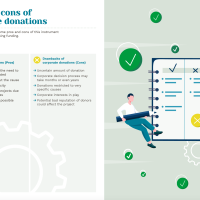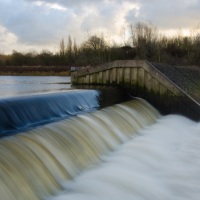WWF Living Planet Report suggests 76% decline in freshwater species globally since 1970s
 Global populations of freshwater mammals, reptiles, amphibians, birds and fish have declined by 76% since the 1970s, according to a new WWF report released today. The Living Planet Report measured the populations of 10,000 representative species across the world between 1970-2010, a method termed the Living Planet Index.
Global populations of freshwater mammals, reptiles, amphibians, birds and fish have declined by 76% since the 1970s, according to a new WWF report released today. The Living Planet Report measured the populations of 10,000 representative species across the world between 1970-2010, a method termed the Living Planet Index.
The results are startling and significant. Global populations of all wildlife – from land, freshwater and sea – have dropped by over half since 1970 – a dramatic fall in less than one human lifetime.
Freshwater species have fared particularly badly, a trend that the WWF report attributes to insufficient freshwater protected areas, habitat loss and fragmentation, pollution and the impact of invasive species (as also reported this year in a journal article by Ben Collen and colleagues in Global Ecology and Biogeography).

The report outlines how the global Ecological Footprint – the area (in hectares) required to supply the ecological goods and services we use – is growing, and is highest in North America and Europe. This growing consumption of the Earth’s natural resources places strain on global biodiversity.
China, India and the USA have the largest water footprint, in terms of water used for industrial and agricultural production, and contain 8 of the top 10 most populous basins experiencing almost year-round water scarcity. As a result of stresses such as water abstraction, dam construction and increasing climate change, the report states that more than 200 global river basins – home to some 2.67 billion people – already experience severe water scarcity for at least one month every year.
These reductions in natural freshwater flows and availability place stress on both human and wildlife populations. The report suggests that these levels of water scarcity are likely to get worse in the future under climate change, further population growth and the rising water footprint that tends to accompany growing affluence.
Marco Lambertini, Director General of WWF International said, “A range of indicators reflecting humanity’s heavy demand upon the planet shows that we are using nature’s gifts as if we had more than just one Earth at our disposal. By taking more from our ecosystems and natural processes than can be replenished, we are jeopardizing our future. Nature conservation and sustainable development go hand-in-hand. They are not only about preserving biodiversity and wild places, but just as much about safeguarding the future of humanity – our well-being, economy, food security and social stability – indeed, our very survival.”
The Living Planet index gives an indication of how global wildlife populations are faring over time. It uses data from 10,380 populations of over 3,038 vertebrate species (fishes, amphibians, reptiles, birds and mammals) studied by scientists, divided into land, sea and freshwater environments in both tropical and temperate environments. The Living Planet Index can then be used to observe whether individual species are increasing, declining or remaining constant, and then drawing wider trends for all species in different biogeographic realms (land, sea and freshwater).
You can read the full report online here and download the PDF summary here and tweet about the report using the hashtag #LPR2014.














